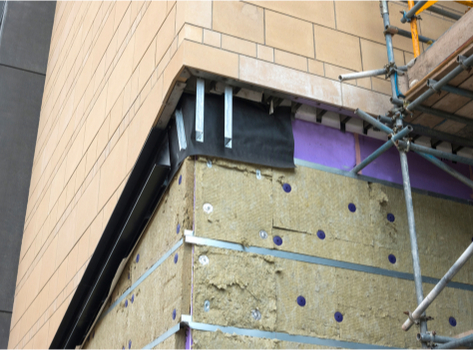Cladding and fire safety
How did the cladding issue come to affect so many flat owners in Scotland?
Article reproduced with the kind permission of Under One Roof.
Initially it was thought problems with cladding were limited to buildings that had Grenfell type “ACM” (Aluminium Composite Material) cladding with a flammable insulation. It subsequently became clear that there were problems arising not just from what materials the cladding was made out of, but also from how the cladding was fixed with inadequate fire stopping.
Issues of balconies with combustible materials, fire escapes, and lower buildings were also brought into the equation. The result was many more owners unable to sell their properties, and increasing insurance premiums.
A process of fire safety surveys evolved – lenders required an External Wall System survey form (EWS1) to be completed. The result of the EWS survey identified those buildings they were happy to lend on, and those which required further, more expert, fire safety surveys.
However, a lack of suitably qualified and appropriately insured experts made it very difficult to get such surveys carried out, and as a result flat owners in buildings that had cladding or balconies made of combustible materials found it hard to sell their properties.
In Scotland, the situation was made worse by the fact that there are multiple owners of each building, each of whom might need a separate EWS1 form.
Scottish Government proposals – Single Building Assessments
On the 19th March 2021, the Scottish Government stepped in with proposals that they would fund a single assessment for every building. The aim is that these Single Building Assessments will provide the evidence that lenders require, and owners will be able to arrange remedial works or sell their properties more easily if no major problems have been found.
Once completed, this will mean owners should not need an EWS1 Form to sell. The combined results of the surveys will also help the Scottish Government assess priorities for their remediation programme.
It’s not compulsory that owners get the Single Building Assessment but buildings which have not had the assessment will not be able to take part in the government-supported remediation programme. The Single Building Assessment will be phased to prioritise those buildings thought to be most at risk.
The government is currently undertaking a pilot phase. Once this is complete the roll out of the Single Building Assessment is proposed to be phased as follows:
- Buildings with an existing cladding or fire risk assessment that highlight risk to life not already included in the pilot programme.
- Buildings with Metal Composite Cladding
- Buildings High Pressure Laminate cladding
- Buildings with Timber Cladding
- Buildings with other combustible cladding types
- Any other buildings with external wall systems
In each of these groups, the programme will start with the tallest buildings and work their way to the lower rise.
RICS Proposals
Shortly before the separate Scottish Government proposal, the Royal Institution of Chartered Surveyors (RICS) published new guidance on when an EWS1 form would be needed. This new guidance means that lower rise buildings with less risky types of cladding will no longer need EWS1 Forms.
This will allow the resources available for carrying out specialist surveys to be focused on more problematic properties. The impact of this announcement has been somewhat overshadowed in Scotland by the Single Building Assessment but it may be of use to some home owners who need to sell quickly.
Tenement Legislation
Under One Roof has been looking at how useful tenement legislation is to owners in this position. It’s our view that surveys and inspections count as tenement management, which is classed as maintenance for the purposes of decision-making.
We also feel that the vast majority of recladding projects can be counted as replacement work – which also counts as maintenance as far as decision-making is concerned.
Even if there is an element of improvement in the work, this is incidental to the replacement and doesn’t affect the decision-making process. Maintenance decisions can be taken by a majority of owners – but do check your own title deeds provisions as these will take priority over tenement legislation.

